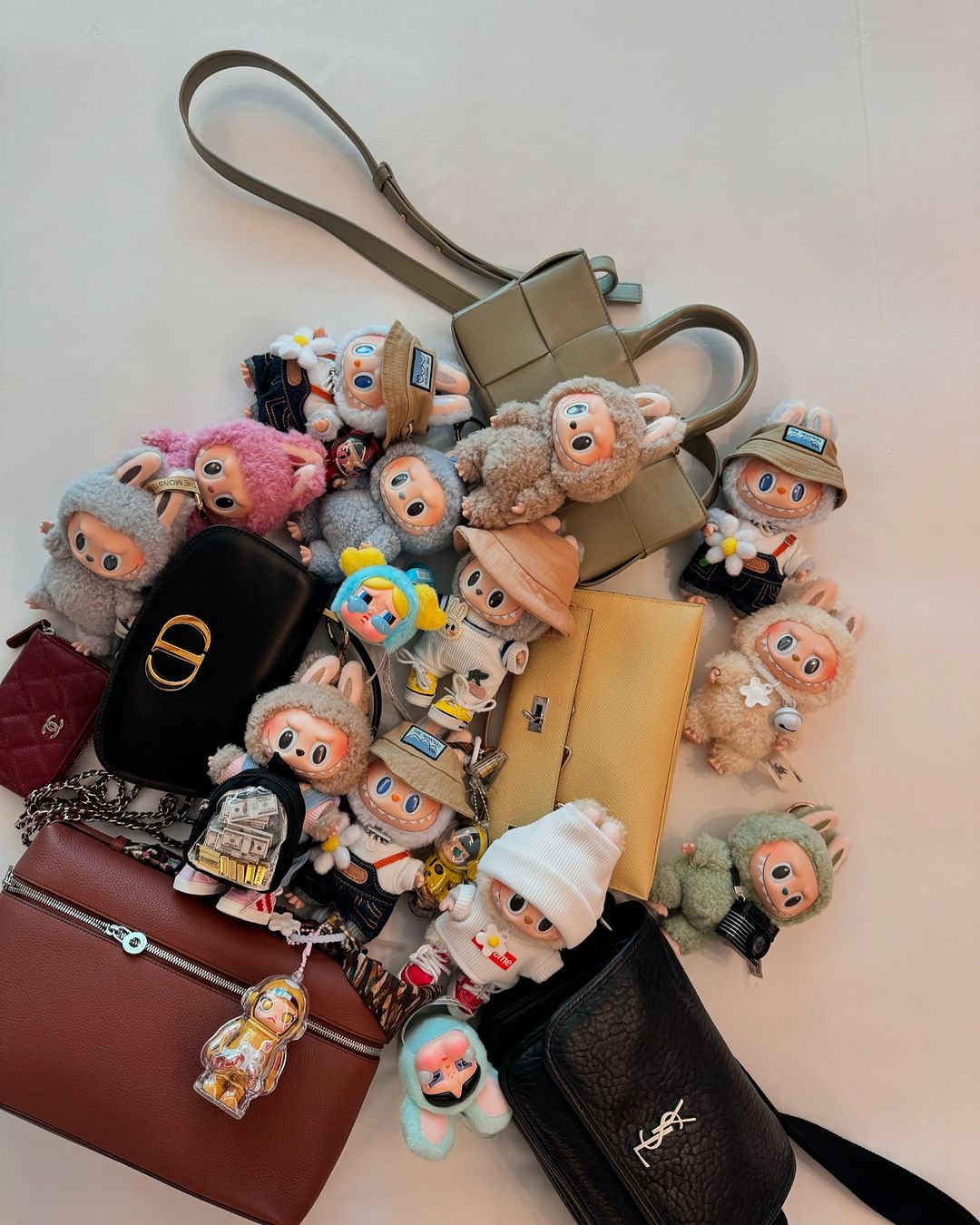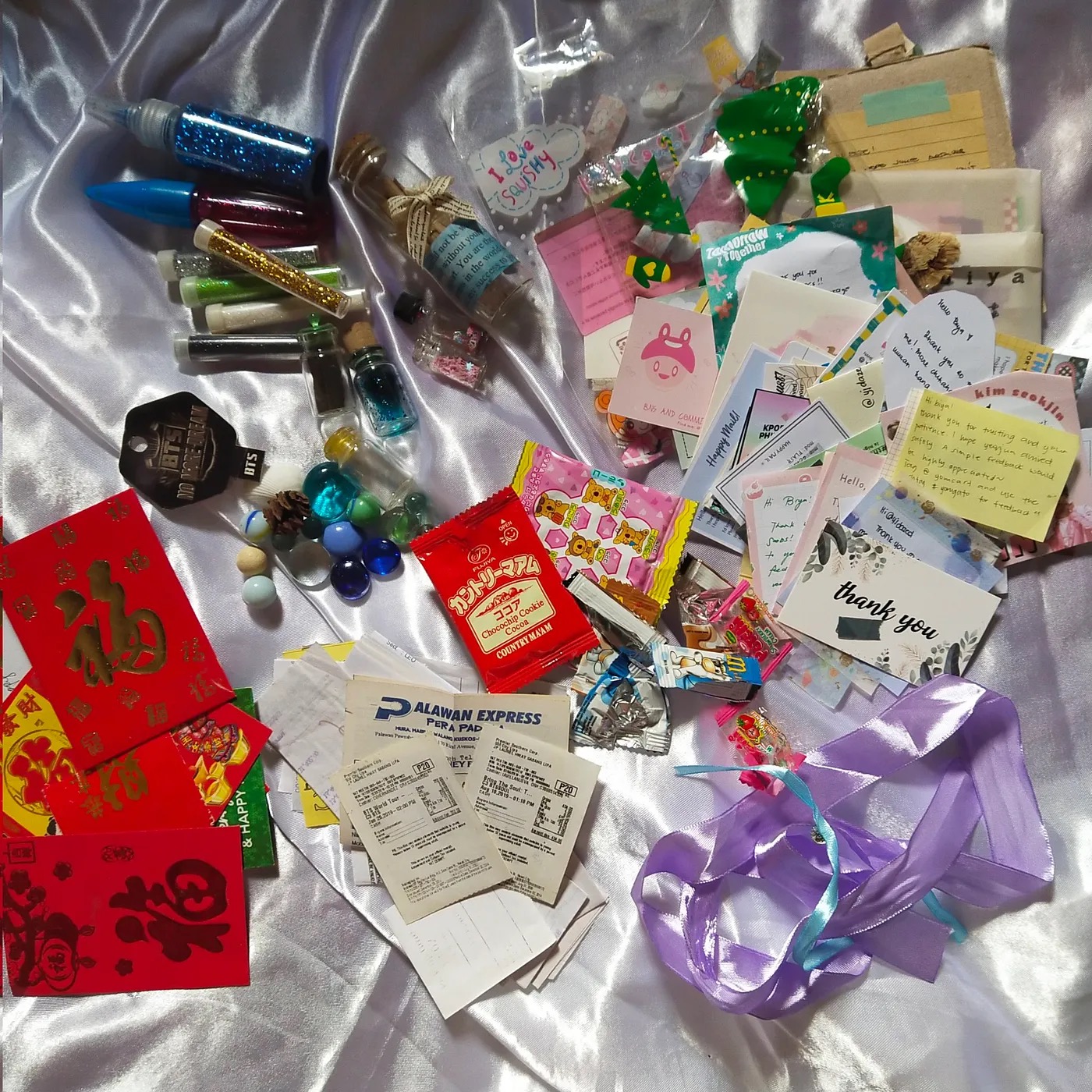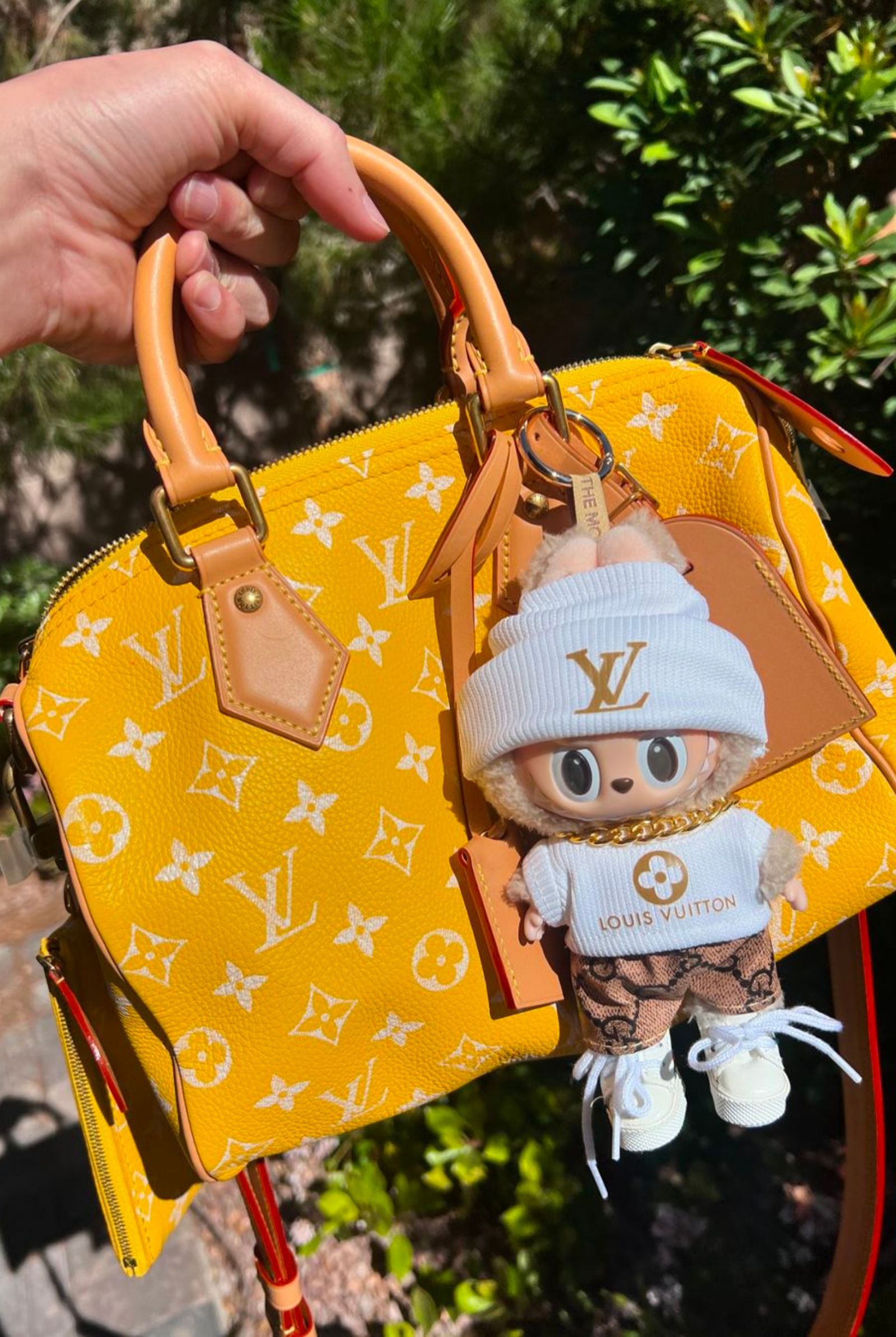Should ‘anik-anik’ remain a term for small items that hold almost no financial value, or can it evolve to include things like Labubu that, while pricey, share a playful, nostalgic essence?
It’s safe to assume that Labubus, the pointy-eared and mischievous-looking monster, has gained a cult following. Just last week, collectors flocked to the newly opened Pop Mart in Mall of Asia to get their hands on these dolls. Celebrities are not immune to the craze; Vice Ganda, Heart Evangelista, Kathryn Bernardo, Julia Barretto, and Marian Rivera are just some of the well-known Filipino names who have joined the Labubu hype. Revisiting Jane Birkin’s affinity for making a statement through the bag and its charms, these dolls can also be seen hanging on bags—styled, dressed up, and even sporting braces.

RELATED: All About Labubu: The Viral ‘Anik-Anik’ You Can Dress Up
Now, a discourse has arisen on social media: with the surge in consumption, most have labeled Labubu as “anik-anik.” But does a PHP 900-PHP 51,000 doll (depending on the size) truly qualify as one or not?
What is Anik-anik?
“Anik-anik” is deeply rooted in Filipino culture. The term is an alternative spelling of “anek-anek,” which also stems from “anu-ano,” and this translates to “all sorts of things,” “knick-knacks,” or “trinkets.” Such examples are souvenir keychains, old ticket stubs, bracelets, pins, badges, or stickers from childhood, photographs or postcards displayed around the house, vintage jewelry passed down in the family, or even shells and stones collected from the beach and other humble mementos. Often, the memories attributed to the collected pieces overrule its monetary value; Filipinos naturally gravitate toward maximalism, a cultural trait where we tend to hold onto various items—not only to decorate and fill spaces but also to preserve cherished belongings that carry meaningful memories.

On paper, the Labubu toy doesn’t really fit this description—from the monetary value alone. Their high price and luxury status separate them from the traditional meaning of anik-anik tied to sentimentality collected through experience and time, and not just in one big purchase. The argument is that these dolls are “designer collectibles,” and therefore stray from the essence of anik-anik.

The Social Code of Anik-anik
This tension reflects a broader discussion about social class and consumer culture, especially as online personalities and influencers spotlight anik-anik collections featuring high-end items. The consumer trend has led some to feel that the term anik-anik is being redefined in ways that deviate from its traditional meaning, alienating those for whom inexpensive trinket collections are a genuine expression of identity and nostalgia.
The sentimental value of anik-anik lies in memory; collectors often feel these keepsakes capture unique, irreplaceable experiences, reflecting responses to both poverty and privilege—consider the Magnum tweet as an example; the original poster said that keeping a Magnum wrapper was a luxury for them back in 2013. In contrast, spotting a Labubu on a bag signals the owner’s ability to afford a PHP 900 or more toy. To some, Labubus are just accessories, easily bought again and again, across countries and Pop Mart branches.
Anik-anik Unboxed: Does Definition Dilute Its Value?
On the flip side of the coin, other netizens consider these toys as playful, nostalgic collectibles that still capture the spirit of anik-anik—because the dolls heal their “inner child.” Due to the aesthetic and customizable appeal, the Labubu doll fits the fun, quirky vibe typical of such anik-anik collections. Plus, anik-anik encompasses two concepts: possession and ownership. The difference between the two? A touch of the self. Possession is the holding of a thing, while ownership is the enjoyment. If looked at this way, don’t Labubus count?
Personally, while I don’t understand the excitement and commotion around these dolls, anik-anik can become a term that constantly evolves based on the experiences of those who define and participate in it. I actually believe that anik-anik should be objects found in the corners of my room, a treasure trove of memories. While they might be considered “novelties,” they still are ultimately personal. Thus, I don’t agree that Labubus can compare to the sentimental value of other personal items and memorabilia—but I also maintain that anyone can have their own version of anik-anik. If the term translates to “kung ano-ano,” shouldn’t it mean that anik-anik can be anything and everything? Besides, whoever’s collecting Labubus is spending their own money. In this chaotic world, if there’s an iota of happiness one could find in these cheeky-looking monsters, then good for them.
And while social class does shape consumer attitudes and purchasing power, influencing how people define anik-anik, different classes may feel similar sentiment for entirely different items. It just depends on which items you’re leaning into: humble mementos or elaborate figurine collections.


Ultimately, collecting anik-anik should be about joy and sentiment, but it’s essential to differentiate it from hoarding. Hoarding involves an overwhelming accumulation of items and is a psychological disorder that can become self-destructive. In contrast, anik-anik collecting is a more intentional practice, centered around selecting items that bring happiness and evoke memories. If, for you, that includes these dolls, or Sonny Angels, or Smiskis, then stand by that. Besides, the thrill of uncovering surprises in “blind” boxes also adds an extra layer of excitement and delight to the experience of collecting.

Photos and Featured Image: YJDAZED (via X), HEART EVANGELISTA, KATHRYN BERNARDO, MARIAN RIVERA, SECRETOHM SATAPAT (via Instagram)
The post Hot Takes: Are Labubus Really Considered “Anik-Anik”? appeared first on MEGA.Hot Takes: Are Labubus Really Considered “Anik-Anik”?
Source: Insta News Pinoy

 (@ubemysweet)
(@ubemysweet)  (@pochagogogow)
(@pochagogogow)  (@xoxo__anika)
(@xoxo__anika) 



0 Comments